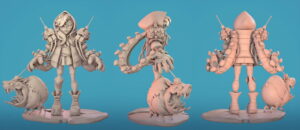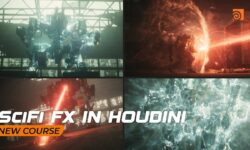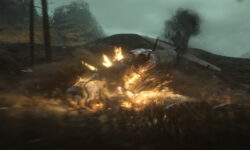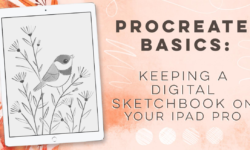Advanced Stylized Character Art for Games Mentorship [CGMA, Weston Reid – 2023, Group-buy]
Release date:2023, May
Duration:18 h 44 m
Author:Weston Reid
Skill level:Beginner
Language:English
Exercise files:Yes
This 10-week course outline for creating a full character from scratch using Zbrush, Maya, Substance Painter, and Unreal Engine 5 looks comprehensive and well-structured! Here’s a refined overview of each week, along with suggestions for additional activities or resources to enhance the learning experience:
Course Outline: Full Character Creation for Games
Week #1: Introduction / Zbrush Blockout
- Focus: Course overview, concept approval, and initial blockout.
- Activities:
- Introduce students and discuss their goals.
- Review and analyze character concepts.
- Begin first pass blockout in Zbrush using Dynamesh and Zmodeler.
- Homework: Refine initial blockout based on feedback.
Week #2: Zbrush Second Pass
- Focus: Refine character model with emphasis on shapes and proportions.
- Activities:
- Continue modeling, focusing on silhouette and secondary shapes.
- Conduct peer reviews to evaluate silhouette readability.
- Homework: Make adjustments to the model based on critiques.
Week #3: Zbrush Final Pass
- Focus: Finalize high-poly model for retopology.
- Activities:
- Polish all shapes to ensure they match the concept in neutral pose.
- Prepare for retopology by addressing any last-minute issues.
- Homework: Ensure the high-poly model is ready for retopology.
Week #4: Retopology
- Focus: Create a clean low-poly model.
- Activities:
- Dedicate the week to retopologizing the high-poly model.
- Discuss principles of topology for rigging and animation.
- Homework: Submit the final low-poly model for review.
Week #5: UV Creation / Texture Baking / Substance Painter Setup
- Focus: Prepare the model for texturing.
- Activities:
- Create UVs for the low-poly model.
- Explain smoothing groups and tangents for normal maps.
- Set up the model in Marmoset Toolbag for baking.
- Homework: Ensure all UVs are correctly laid out.
Week #6: Substance Painter Texturing Blockout
- Focus: Initial texturing phase in Substance Painter.
- Activities:
- Set up texture sets and export settings.
- Begin texture blockout.
- Set up the base project in Marmoset Toolbag or Unreal Engine.
- Homework: Prepare the initial textures for review.
Week #7: Substance Painter Texturing Second Pass
- Focus: Refine textures and materials.
- Activities:
- Further refine textures and materials in Substance Painter.
- Implement first pass lighting and post-processing in Marmoset Toolbag or Unreal.
- Homework: Prepare to present refined textures for feedback.
Week #8: MGear Rigging and Skinning (Optional)
- Focus: Optional rigging session using MGear.
- Activities:
- Introduce rigging basics and apply MGear for rigging.
- Continue refining textures and lighting in Marmoset Toolbag or Unreal.
- Homework: Complete any rigging and skinning tasks.
Week #9: Optional MGear Idle Animation and Posing
- Focus: Create idle animations or posed character.
- Activities:
- Implement idle animation using MGear.
- Pose the character and export to Unreal or Marmoset Toolbag.
- Homework: Finalize animation and prepare for review.
Week #10: Final Polish
- Focus: Complete final touches and prepare for portfolio.
- Activities:
- Finalize model, textures, materials, lighting, and post-processing.
- Render shots and prepare composite images for portfolio.
- Homework: Create a portfolio presentation showcasing the character.
Additional Resources and Activities
- Reference Material: Provide links to anatomy references, PBR material guidelines, and character design resources.
- Guest Speakers: Invite industry professionals for Q&A sessions about character creation.
- Portfolio Reviews: Schedule individual or group sessions for feedback on portfolio presentation.
- Community Building: Create a Discord or Slack channel for students to share progress and ask questions.
This structure not only emphasizes technical skills but also encourages creativity and collaboration, preparing students for careers in game character art!



![Advanced Stylized Character Art for Games Mentorship [CGMA, Weston Reid – 2023, Group-buy] img](https://online-courses.club/wp-content/uploads/2024/10/Advanced-Stylized-Character-Art-for-Games-Mentorship-864x450.jpg)


 Channel
Channel





